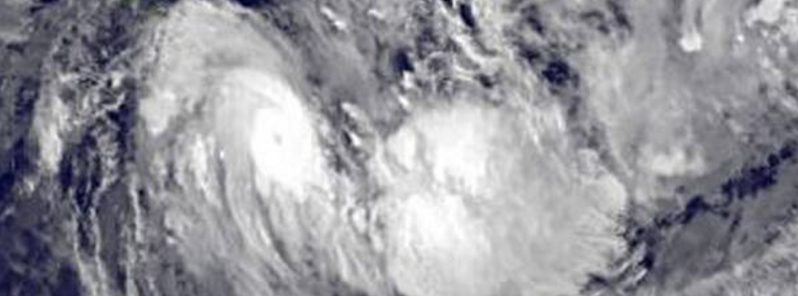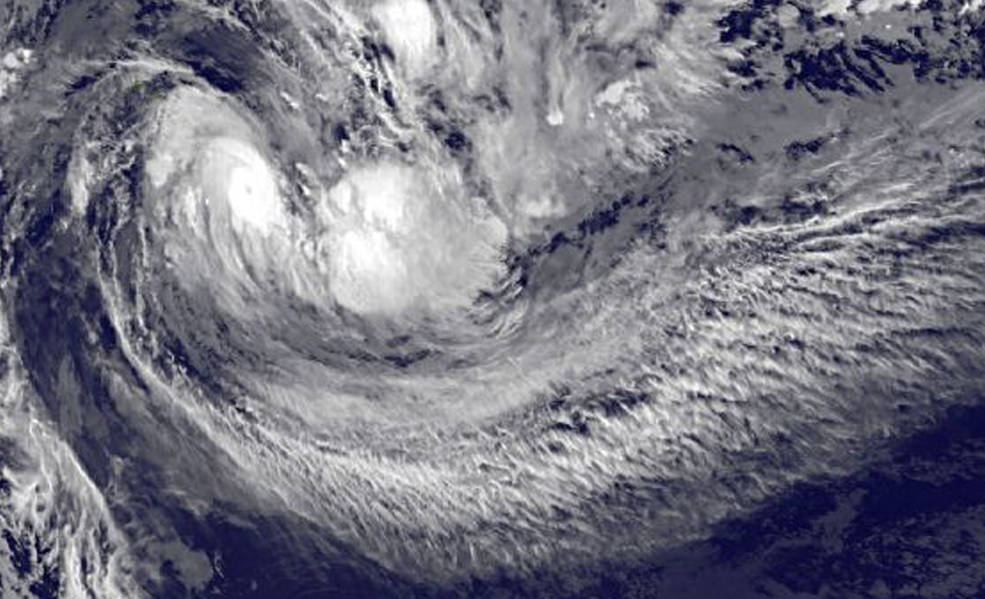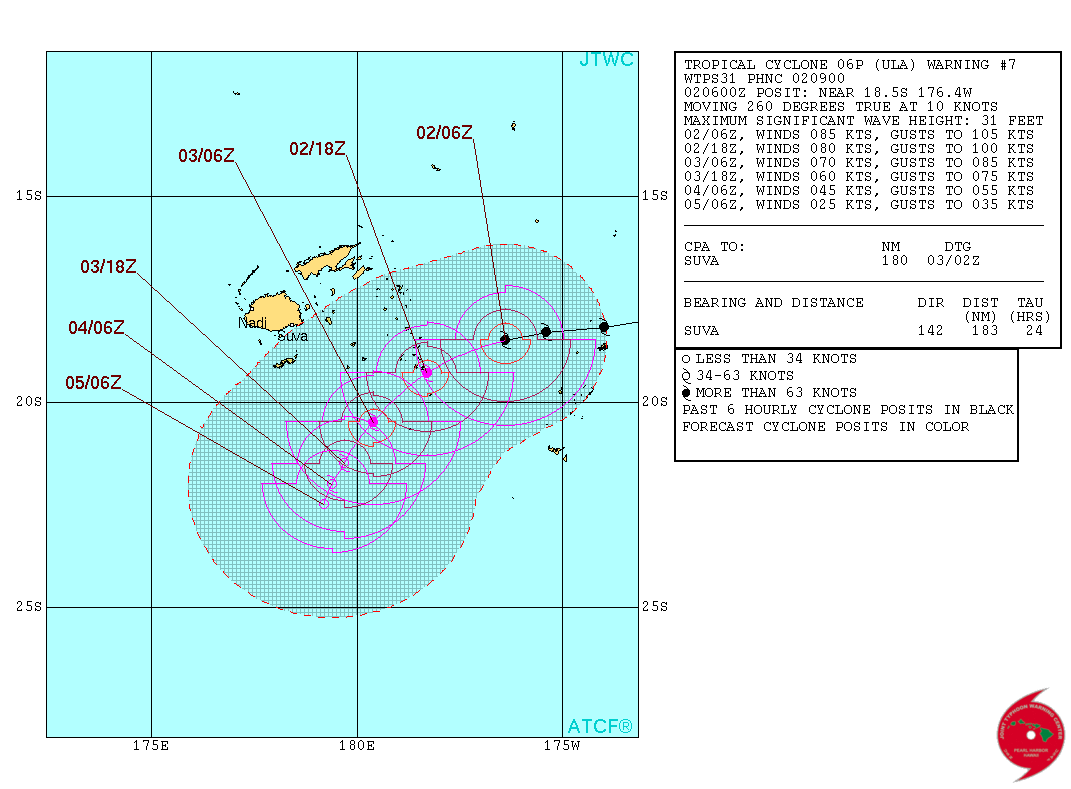Tropical Cyclone “Ula” hits Tonga, hundreds evacuated

Severe Tropical Cyclone "Ula" hit Tonga kingdom in the Pacific Ocean on January 1, 2015. Hundreds of people were evacuated ahead of the system's approach. Luckily, no victims were reported so far. Ula is expected to weaken as it near Fiji on December 3, nevertheless, the Tropical Cyclone Warnings for heavy rainfall and strong winds remain in place.
Ula made passage over the northern island of Vava'u with a force equivalent to the Category 3 hurricane, packing winds up to 150 km/h (93.2 mph).

This visible image from NOAA's GOES-West satellite on December 31, 2015 at 1200 UTC shows a small eye developed in Tropical Cyclone "Ula" just south of Pago Pago in the Southern Pacific Ocean. Image credit: NASA/NOAA GOES Project
A state of emergency was declared in Tonga before Ula's passage to prevent or minimize the loss of human life, illness or injury, according to Akilisi Pohiva, the Prime Minister of the country. 11 evacuation centers have been established across the affected areas, and more than 390 people have been relocated.
"We are very happy that there are no casualties, police checked with hospitals and town officers to confirm that," Siaosi Sovaleni, the chairman of the National Emergency Management Office said.

NASA Sees Tropical Cyclone Ula's Eye and Rainfall On Dec. 29, NASA's GPM saw rain was falling at a rate of over 83.6 mm (3.29 inches) per in a feeder band (of thunderstorms) northeast of the developing tropical cyclone Ula's center. Video credit: NASA/JAXA/SSAI, Hal Pierce
Tropical Cyclone "Ula" formed on December 30 east-northeast of Pago Pago, American Samoa and its peak winds have been expected to remain below 140 km/h (86.9 mph). However, the storm intensified to a severe tropical cyclone as it approached Tonga.
Strong winds toppled trees and damaged crops across the affected area, and the main airport was closed to domestic flights. Residents of Tonga have been lucky enough to escape storm's further intensification as its surrounding environment was packed with little moisture, according to Ofa Fa'anunu, the director of the Tonga Meteorological office.
"If the moisture had been present it would have been the right ingredients for development into a much stronger system."


Tropical Cyclone "Ula" 4-day forecast track. Image credit: JTWC
Tropical Cyclone "Ula" was located approximately 550 km (341.7 miles) east of Suva, Fiji and moving westward at 18.5 km/h (11.5 mph) on December 2 at 09:00 UTC, according to Joint Typhoon Warning Center (JTWC). The system was packing maximum sustained winds of 157.4 km/h (97.8 mph) with gusts reaching 194.5 km/h (120.8 mph).
Ula is currently losing its intensity, and its sustained wind speed will drop to 129.4 km/h (80.4 mph) over the next 24 h. The system will mostly dissipate over the next 3 days due to decreasing sea surface temperatures, increasing vertical wind sheer and dry air entrainment, according to JTWC.
The hurricane warning for Vava'u was downgraded to a storm warning during December 2 together with the tropical cyclone warnings for other island groups in the area. Tropical cyclone warnings for heavy rainfall and strong winds remain in effect in Tonga and Fiji as the system approaches.
Featured image: This visible image from NOAA's GOES-West satellite on December 31, 2015 at 1200 UTC shows a small eye developed in Tropical Cyclone "Ula" just south of Pago Pago in the Southern Pacific Ocean. Image credit: NASA/NOAA GOES Project

Commenting rules and guidelines
We value the thoughts and opinions of our readers and welcome healthy discussions on our website. In order to maintain a respectful and positive community, we ask that all commenters follow these rules.